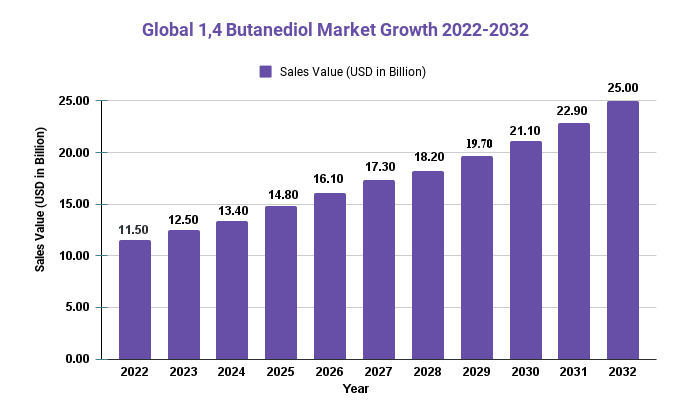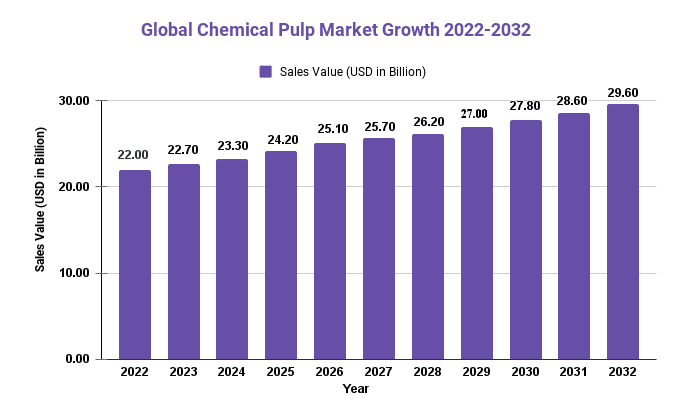Cannabidiol Market Size was valued at USD 6.2 billion in 2022. It is expected to reach USD 28.9 billion by 2032, with a 17.2% CAGR during the 2023-2032 forecast period.
Cannabidiol, a chemical compound found within the cannabis Saliva plants, is extracted from hemp. It is a powerful treatment for anxiety, seizures, and pain relief. The market is driven by the high demand for CBD because of its healing properties. The rising acceptance and increased use of CBD-infused products due to government approvals are other factors that will drive the market.
Using cannabidiol oil to make skincare products that treat wrinkles and acne is becoming more common. Sephora recently launched a CBD or cannabidiol skincare line in its stores. Ulta Beauty plans to launch a line of cannabidiol-based products. Many new companies are entering the market for cosmetics infused with cannabidiol. Aphria, a distributor and producer of medical and recreational cannabis-based products in Canada, launched its Cannabidiol-based cosmetics line in Germany in 2019.
Figure:

Key Takeaways:
- Due to increased demand for natural products for health and wellbeing, as well as acceptance of cannabis use for recreational and medical purposes, the CBD market has been growing rapidly.
- The legalization in the United States of hemp-derived CBD has led to a boom in the market. This is because more companies are able to enter the market and expand the product ranges.
- The CBD market has a lot to offer, but there are still challenges. There are no clear regulations or standardization, and there are concerns about quality control and mislabeling.
- Future growth in the CBD market can be attributed to increased research on the health benefits of CBD and greater consumer education about the benefits and uses for CBD products.
Get the sample pages of report@ https://chemicalmarketreports.com/report/global-cannabidiol-market/#requestForSample
Regional Snapshot
North America: As a result of the legalization of CBD derived from hemp in the US and the rising acceptance of cannabis for both medical and recreational purposes in both nations, the US and Canada currently account for the majority of global CBD product sales. The introduction of new goods and rising customer demand are likely to fuel market growth in North America over the next few years.
Europe: Due to rising consumer knowledge and acceptance of CBD as a natural health and wellness product, the European CBD industry is likewise expanding quickly. In contrast to North America, the European market is still in its infancy, and there are more regulatory obstacles to overcome.
Asia-Pacific: The CBD industry in this region is still in its infancy because many of the nations in it have stringent laws governing cannabis and CBD products. Nonetheless, there is rising interest in CBD products in nations like Japan and South Korea, and as laws are simplified, the industry is anticipated to expand in the upcoming years.
Latin America: Although the CBD industry in this region is still in its infancy, it has the potential to expand as additional nations in the area legalise cannabis and CBD products. For instance, Brazil has made the use of CBD for medical purposes lawful. Interest in CBD products is also rising in nations like Mexico and Colombia.
Market Report Scope
| Report Attribute | Details |
| The market size value in 2022 | USD 6.02 Bn |
| Revenue forecast by 2032 | USD 28.09 Bn |
| Growth Rate | CAGR Of 17.02% |
| Regions Covered | North America, Europe, Asia Pacific, Latin America, and Middle East & Africa, and Rest of the World |
| Historical Years | 2017-2022 |
| Base Year | 2022 |
| Estimated Year | 2023 |
| Short-Term Projection Year | 2028 |
| Long-Term Projected Year | 2032 |
Ask Before customization study@ https://chemicalmarketreports.com/report/global-cannabidiol-market/#inquiry
Market Dynamics
Drivers
CBD is highly sought after for its fitness and health benefits.
Due to growing consumer awareness regarding health and fitness, the CBD market will expand. The CBD market will be positively affected by legalization of medical marijuana and an increase in consumer disposable income.
CBD products can be used to treat anxiety, stress, insomnia, chronic and severe pain, headaches, migraines, skin conditions, seizures as well as joint pain, inflammation, neurological disorders, epilepsy, and other issues. Chronic pain management is a popular option due to the many benefits of CBD. CBD products are in high demand due to their widespread medical benefits and pain relief. CBD works on many biological pathways within the body to relieve chronic pain. CBD has analgesic, anti-inflammatory and antioxidant properties. People with chronic pain can experience anxiety relief from CBD products. Due to rising demand, the market for CBD products that treat chronic pain is expanding rapidly. This allows people to maintain their health and exercise without any pain.
CBD products: Government approvals and regulations improved
Before CBD-based products can be sold or distributed in the local and international market, they must be approved by the government. This restricts market growth. These restrictions have been less restrictive over the years, and more refined CBD products are accepted. This will allow for greater market growth and supply.
Restraints
CBD products can be expensive
For those with sleep, pain, inflammation or other problems, CBD is a popular holistic treatment option. Because CBD is still a new product, its price can fluctuate as it has been subject to less research and development. It was just approved and regulated. Since 2018, when hemp production was legalized, CBD products have seen a rise in prices. Prices for different CBD products have experienced some inflation as a result.
Many farmers now sell and grow hemp for CBD products. This is despite the fact that it is very popular. However, there are some challenges. When switching to a different crop, you can incur additional costs. Harvesting hemp is easiest with a combine harvester. Farmers who have previously grown other crops like strawberries don’t require combines and can’t immediately afford one. To harvest the hemp, they must employ workers. As the raw material becomes more costly, this increases the product’s overall price.
Hemp requires more work to grow so farmers should inspect their crops as they grow. Once hemp has been harvested, extracting cannabidiol is difficult and expensive. Supercritical carbon dioxide (CO2 extraction), or ethanol is required for CBD processors and extractors. Refinement and extraction of CBD takes special machinery, which can take a long time. This results in a higher CBD price. These factors all contribute to CBD products being more costly than other products. This will likely reduce market demand.
Opportunities
There is a growing need for CBD products for natural health and well-being products. This is because more consumers are looking for natural alternatives to traditional drugs.
Increasing cannabis legalization: The legalization in several countries of cannabis, mainly for medical purposes is creating new opportunities for the CBD markets to grow and reach more customers.
Product diversification, innovation and new product development: While the CBD market is still very young, there is great potential for new product innovation and product development in areas such as cosmetics and food and beverages as well as pet products.
Increased research into CBD and scientific understanding. This will allow the market to expand into other areas and offer new applications.
Challenges
Regulatory hurdles and uncertainty. The CBD market faces significant challenges due to a lack of clear regulations across countries and regions. This can lead to confusion and inhibit the market growth.
Quality control issues: The lack of regulation can lead to mislabeling, inconsistent use, and contamination.This presents a challenge for safety and consumer trust in the market.
Market saturation: There is a possibility of market saturation as more CBD businesses enter the market. This can lead, in some cases, to higher competition and lower profit margins.
Limited access banking and financing: Many CBD-related companies have difficulties accessing financing or traditional banking services because of the complex legal and regulatory environment.
Recent Developments
Canopy Growth Corporation, Lemurian, Inc., an innovator in clean vaping technologies and a California-based producer, announced that they had reached definitive agreements in May 2022. Canopy Growth can acquire 100% of Jetty’s capital stock, if the U.S. government allows THC. This allowed Canopy Growth growth.
June 2021Vertical Wellness, a US-based manufacturer of cannabidiol, is here. It announced a merger in Canada with CanaFarma Hemp Products Corp., which makes multiple hemp-related products. Vertical Wellness will be a public entity, with a combined market value of USD 50 millions.
Based on Product and Services
- Food Grade
- Pharmaceutical Grade
Based on Application
- Anxiety
- Fibromyalgia (FM)
- Diabetes
Маrkеt Kеу Рlауеrѕ:
- CBD American Shaman
- ENDOCA
- Gaia Botanicals
- Isodiol
- Medical Marijuana
- Aurora Cannabis (AC)
- Aurora Cannabis (AC)
- Canopy Growth Corporation
- CV Sciences
- IRIE CBD
- Elixinol
- NuLeaf Naturals
- PharmaHemp
- Folium Biosciences
Key questions:
Q: What is the current size of the global Cannabidiol market?
Cannabidiol Market Size was valued at USD 6.2 billion in 2022. It is expected to reach USD 28.9 billion by 2032, with a 17.2% CAGR during the 2023-2032 forecast period.
Q: What types of CBD products are available?
CBD products come in various forms, including Food Grade, pharmaceutical-grade products. Each type of product offers a different method of consumption and dosing.
Q: What are the potential health benefits of CBD?
CBD has been shown to have potential health benefits, including pain relief, anxiety reduction, and anti-inflammatory properties. However, more research is needed to fully understand the extent of these benefits and the optimal dosing for different conditions.
Contact us
Contact Person: Mr. Lawrence John
Market.us (Powered by Prudour Pvt. Ltd.)
Tel: +1 718 618 4351
Send Email: [email protected]



